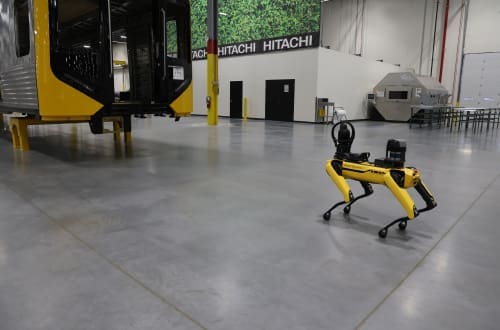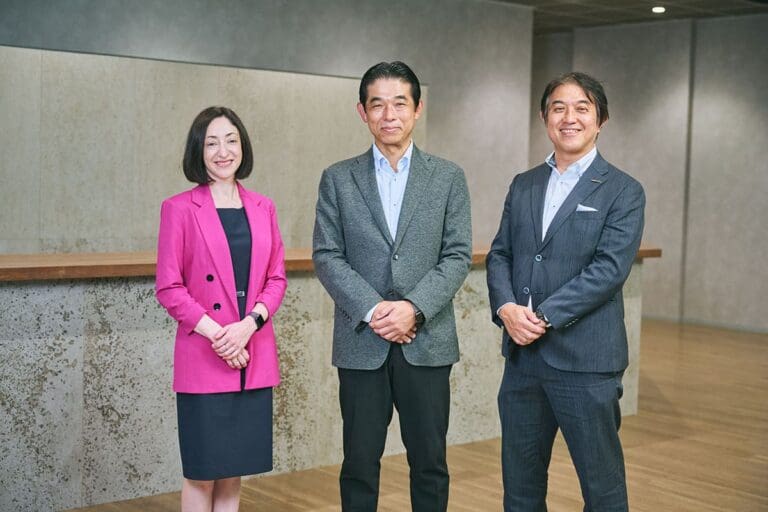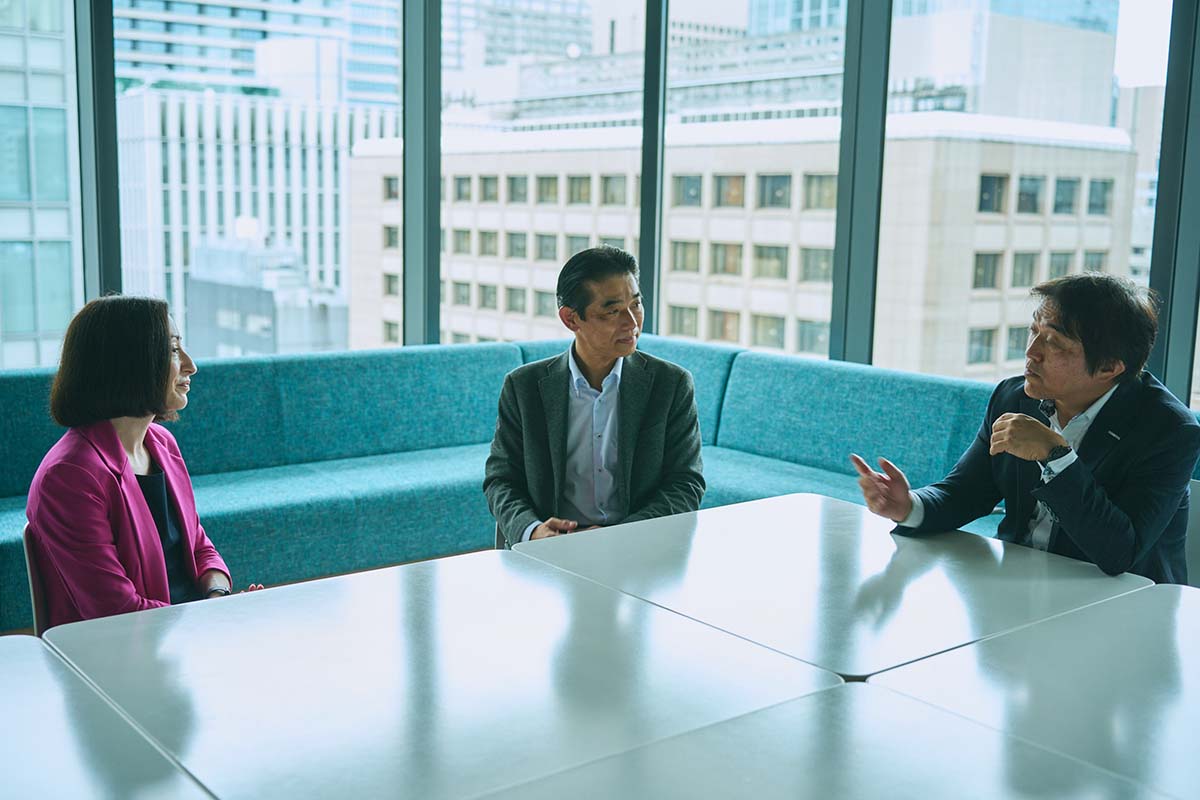- Services
Technology Capabilities
Technology Capabilities- Product Strategy & Experience DesignDefine software-driven value chains, create purposeful interactions, and develop new segments and offerings.
- Digital Business TransformationAdvance your digital transformation journey.
- Intelligence EngineeringLeverage data and AI to transform products, operations, and outcomes.
- Software Product EngineeringCreate high-value products faster with AI-powered and human-driven engineering.
- Technology ModernizationTackle technology modernization with approaches that reduce risk and maximize impact.
- Embedded Engineering & IT/OT TransformationDevelop embedded software and hardware. Build IoT and IT/OT solutions.
- Industries
- GlobalLogic VelocityAI
- Insights
BlogsDecember 16, 2024Gene LeybzonAccelerating Digital Transformation with Structured AI Outputs
This code produces the following output that can be imported into the candidate trackin...
 BlogsOctober 30, 2024Yuriy Yuzifovich
BlogsOctober 30, 2024Yuriy YuzifovichAccelerating Enterprise Value with AI
Discover how financial services integrations are transforming from standalone offerings...

- About Us
Press ReleaseGlobalLogicSeptember 23, 2025Hitachi agrees to acquire German data and AI services firm ...
Strengthening GlobalLogic’s data and consulting capabilities and expanding footprint in...
 Press ReleaseGlobalLogicSeptember 10, 2025
Press ReleaseGlobalLogicSeptember 10, 2025GlobalLogic and Ericsson Deploy Private 5G Network at Hitachi ...
The new infrastructure is the digital backbone of the Hagerstown plant, enhancing effic...

- Careers
 All News
All NewsHitachi High-Tech and GlobalLogic: Behind the Challenge of Crossing Cultural Barriers and Breaking Free from “Fixed Notions”
ShareHitachi High-Tech, which develops and delivers semiconductor manufacturing and inspection equipment globally, has decided to build a next-generation platform that improves the entire manufacturing process through data, partnering with GlobalLogic in the face of structural changes in the industry. Three key figures sat down to discuss the untold story behind this bold challenge.
In this series exploring the philosophy of “One Hitachi”—Hitachi’s company-wide commitment to mobilize its collective strength—and the essence of “Lumada”, the first installment featured Shinichiro Fukushima, Director of Lumada Innovation Hub Tokyo. He shared the journey of how Hitachi overcame a management crisis and achieved transformation by making “co-creation” its central axis. At that time, the name that came up as an indispensable partner in evolving Hitachi’s co-creation to the next stage was GlobalLogic.
This second installment takes a closer look at co-creation in practice, shedding light on the transformation of Hitachi High-Tech, a Hitachi Group company, in partnership with GlobalLogic through interviews with key players.
Holding a Leading Global Market Share—Yet Facing the Need for Transformation
Hitachi High-Tech, which manufactures and sells semiconductor manufacturing and inspection equipment, has developed multiple products with significant global market share. Notably, its specialized inspection system for examining transistor structures—the heart of semiconductors—is a type of scanning electron microscope called CD-SEM. For over a quarter of a century, CD-SEM has held more than 70% of the global market share. “With measurement precision equivalent to the diameter of a single hydrogen atom, CD-SEM is trusted by semiconductor manufacturers worldwide,” says Toru Isoguchi of Hitachi High-Tech.
However, rapid advancements in cloud computing and AI have brought major shifts to the semiconductor industry. Miniaturization and 3D integration have increased manufacturing complexity, while faster development cycles are now demanded. Moreover, since semiconductor manufacturing requires substantial electricity, reducing power consumption across the entire process has become a pressing challenge.
To meet these demands, semiconductor manufacturers are seriously pursuing “manufacturing DX” by managing the entire process end-to-end, aiming for greater automation, efficiency, and energy savings. The key to enabling this is the data platform. By leveraging IoT to collect and analyze data output from manufacturing and inspection equipment, these platforms drive efficiency improvements in production.
The problem is that conventional platforms were closed within individual equipment manufacturers. This forced semiconductor makers to build their own systems to integrate data across different vendors.
Recognizing this issue, Hitachi High-Tech concluded that it needed to become a platform provider itself—offering customers a service that integrates data not only from its own equipment but also from other manufacturers’ devices. For an equipment manufacturer like Hitachi High-Tech, this decision signaled nothing less than a transformation of its own business model. Fukushima, who had been closely watching Hitachi High-Tech’s efforts, recalls:
“Our new management plan, Inspire 2027, sets the goal of entering a phase where we create service businesses by leveraging digitized assets such as data platforms. This is a major challenge for the entire Group. Within that, Hitachi High-Tech’s initiative to build a platform that enables customers to use their data struck me as an important hint for the Group-wide transformation.”
Yet, manufacturing data has long been considered strictly confidential. How, then, did Hitachi High-Tech approach the challenge of linking customer data with its platform?

Toru Isoguchi (Corporate Officer, Deputy Group General Manager, Nano-Technology Solution Business Group, and General Manager, Business Strategy Planning Div., Hitachi High-Tech)
“Until recently, semiconductor manufacturing data belonged solely to semiconductor manufacturers, and equipment makers had no visibility into it. However, with today’s need for increasingly advanced manufacturing and stronger environmental measures, realizing smart manufacturing has become indispensable—something that customers alone can no longer achieve. That is why equipment manufacturers, who are positioned closest to the process, are now being recognized as partners in solving these challenges,” explains Isoguchi.
The Key to Problem-Solving Is “Partnership”—Why GlobalLogic?
Development of the next-generation platform began in 2023, with two major goals: “flexibility to share data from other manufacturers’ equipment” and “scalability to immediately respond to customers’ production expansion.”
Hitachi High-Tech’s existing platform, ExTOPE-NT, which had been provided to customers, tied applications to specific servers and kept data siloed. As a result, each time equipment or applications were added, new servers also had to be installed—leaving the system with limited flexibility and scalability.
These were not issues that could be resolved with superficial fixes. A strong development partner was required—and the company chosen was GlobalLogic. Having joined the Hitachi Group in 2021, GlobalLogic brought extensive experience supporting the manufacturing and semiconductor industries, as well as a proven track record as a global DX partner for many enterprises. Expectations were therefore high for GlobalLogic to serve as a key driver of Lumada.
Yuliia Shtukaturova, who leads the company’s European business, described her perspective on the current state of the semiconductor industry as follows:
“With the rapid growth of technologies such as generative AI, demand for semiconductors is expanding. Companies now face the dual challenge of how quickly they can grow and how effectively they can scale that growth. They must push productivity to the limit in order to produce more with fewer resources, while also ensuring stability in their production systems—an extremely difficult challenge. I saw that Hitachi High-Tech, as a manufacturer of semiconductor equipment, was in a position to capture significant growth by helping semiconductor makers address these issues.”

Yuliia Shtukaturova(Senior Vice President & Head of EMEA, GlobalLogic
This perspective aligned perfectly with that of Hitachi High-Tech. “The vision for our next-generation platform was first to build a platform more flexible and scalable than what exists today. And in the long term, we envisioned providing solutions across the entire semiconductor manufacturing process, including equipment from other vendors. To realize this, we needed GlobalLogic’s capabilities,” says Isoguchi.
Thus, Hitachi High-Tech welcomed GlobalLogic as a partner and embarked on a path of co-creation toward building the next-generation platform.
GlobalLogic’s Three Pillars That Lead Co-Creation to Success
At the outset of co-creation, what did GlobalLogic focus on? According to Shtukaturova, GlobalLogic brings three unique strengths to its work in supporting enterprise DX.
The first is “Design for Desirability.” The process begins with conversations with customers to thoroughly understand how end users will use the product or service and what behaviors they will adopt. “We don’t start with specifications; instead, we repeatedly discuss with customers—until both sides are convinced—what should be built, from the concept stage itself. This is the starting point of our design thinking,” explains Shtukaturova.
Only after the concept is defined does product development begin. This corresponds to the second pillar, “Engineering for Excellence.” Here, the agile approach comes into play: hypotheses and verifications are repeated to quickly respond to changing circumstances and deliver the optimal product.
The third is “Create for Intelligence.” Simply developing software and delivering it to customers does not produce enough value. GlobalLogic instead seeks to understand the data customers generate, and from it build and propose new service strategies. By fully leveraging these three pillars, GlobalLogic stays alongside customers all the way until they succeed in creating data-driven businesses.
“Hitachi High-Tech’s service development team showed great interest in GlobalLogic’s approach and told us, ‘We want to do this together.’ Their openness to new ideas and willingness to transform themselves resonated with us, and we mobilized all available resources to launch the project,” recalls Shtukaturova.
The Greatest Barrier Was the Definition of “Quality”: When Two Cultures Collided
Fukushima notes that while he placed high expectations on the co-creation project between Hitachi High-Tech and GlobalLogic, he was equally intrigued by how the culture transformation at Hitachi High-Tech would unfold.

Shinichiro Fukushima (Lumada Collaboration LIHT Director, Hitachi)
“Hitachi aims to deliver value by combining strengths in IT, OT, and products. However, particularly in OT and product manufacturing, the very ‘rigidity’ that ensures quality can sometimes lead to resistance against transformation. I was very curious to see how those on-the-ground barriers would be overcome,” Fukushima remarks.
In response to Fukushima’s question, Isoguchi explains that just as GlobalLogic was committed to thoroughly understanding customers’ true challenges, it was equally important for Hitachi High-Tech to understand GlobalLogic’s way of thinking.
“Our development team, including myself, traveled to GlobalLogic’s site in Poland. It was about a year after the project had begun, and we were holding a meeting with Yuliia and her local team to decide whether to officially proceed with development. At that meeting, GlobalLogic presented their approach to quality assurance—but no one on the Hitachi High-Tech side could understand what they meant. No matter how many times we discussed it, it didn’t make sense to us.”
To address this, Isoguchi suggested writing down and comparing the two companies’ views on quality.
“It was only when we wrote it out that the difference became clear. For Hitachi High-Tech, quality meant the standards necessary to ship products that are ‘safe’ and meet the ‘promised performance and functionality’ to customers. By contrast, GlobalLogic’s approach to quality assurance was about activities aimed at truly improving the quality of the product itself. Recognizing this major difference finally enabled us to understand the essence of the product GlobalLogic was striving for,” says Isoguchi.
The differing perspectives on quality were not about one being right and the other wrong. In the OT and manufacturing world, the absolute mission is to keep systems running to specification 24/7, 365 days a year. In the DX world, the essential task is to continuously evolve in response to ever-changing customer needs. The very elements required of “quality” were fundamentally different in the two domains. Through the discussions in Poland, Hitachi High-Tech’s development team came to realize the essence behind GlobalLogic’s assertion: that the traditional Hitachi High-Tech concept of quality could not simply be applied as-is to the digital domain.
Even though the development team had reached this understanding, when they returned to Japan and explained it to Hitachi High-Tech’s Quality Assurance team, it was not understood at all.
Nevertheless, Isoguchi’s team did not give up. Just as they themselves had needed time to understand, they considered how best to convey the message, explaining repeatedly and even arranging discussions with top management. They also referred to the fact that Hitachi, Ltd. already had its own digital development quality standards aligned with GlobalLogic’s approach, and sought to incorporate those into the project.
As a result of these efforts, they came to a mutual understanding, and in the end, Hitachi High-Tech’s Quality Assurance team officially became part of the project. “Of course, concerns at the local level have not been completely eliminated. However, we learned that in order to transform ways of thinking, it is important to steadily build understanding, even little by little,” says Isoguchi.

Fukushima remarks, “Making challenges visible, debating them thoroughly, and getting to the essence—that is true co-creation,” and continues:
“Even within Hitachi, there are not many teams that can do this. Hearing this story made me realize that with GlobalLogic joining the Group, the co-creation that Hitachi is driving has entered a new stage.”
Thus, the next-generation platform development project between Hitachi High-Tech and GlobalLogic is now moving into full-scale development. In the latter half of this article, we will explore another key element of development: the process of introducing agile development, an overview of the services that have been built, and prospects for the future.
 How can I help you?
How can I help you?
Hi there — how can I assist you today?
Explore our services, industries, career opportunities, and more.
Powered by Gemini. GenAI responses may be inaccurate—please verify. By using this chat, you agree to GlobalLogic's Terms of Service and Privacy Policy.
